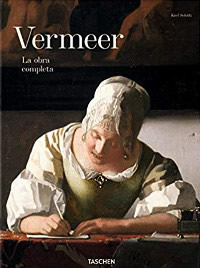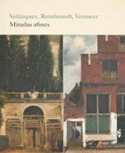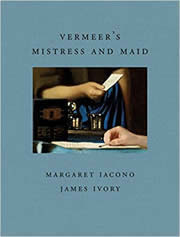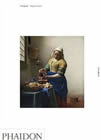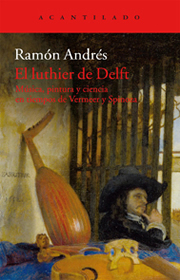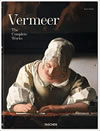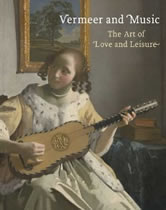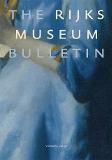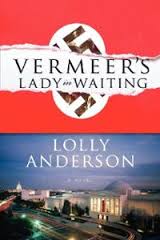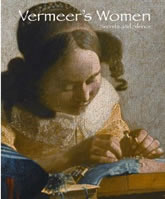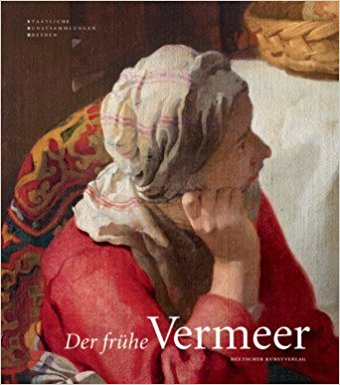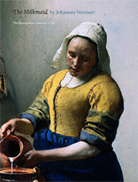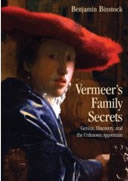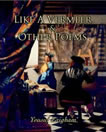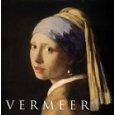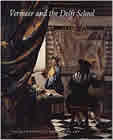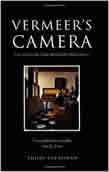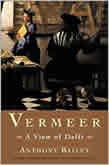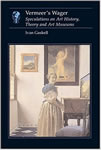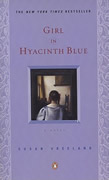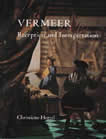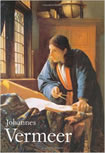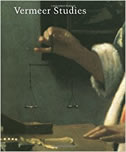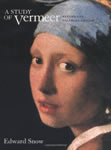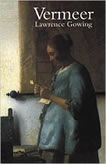By purchasing books via any of the Amazon.com or Amazon.uk links below, you will be contributing to the growth and maintenance of Essential Vermeer website, obviously, at no additional cost to your purchase.
Young Woman Seated at a Virginal: A Second Look (free download)
Jonathan JansonDecember 11, 2024
(Free download)
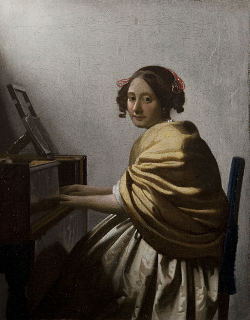
Since the 2004 sale of Young Woman Seated at a Virginal at Sotheby’s, this small canvas has been accepted as an authentic painting by Vermeer almost exclusively on the basis of a decade-long technical investigation spearheaded—please note—by Sotheby’s itself. Since then, there has been only a handful of high-intensity critical analyses of this "new Vermeer." In this essay, I attempt to evaluate the picture from a fresh point of view via a side-by-side comparison with Vermeer’s later works, such as The Lacemaker, The Guitar Player, Lady Standing at a Virginal, and Lady Seated at a Virginal. These paintings—whatever their expressive merit—rank among Vermeer's most technically refined and compositionally innovative achievements, and, by comparison, expose the rudimentary design and numerous technical shortcomings of the Leiden painting that have thus far been substantively unaddressed.
Published to accompany the once-in-a-lifetime exhibition at the Rijksmuseum, Amsterdam, this is the first major study of Vermeer’s life and work in many years.
Johannes Vermeer's intensely quiet and enigmatic paintings invite the viewer into a private world, often prompting more questions than answers. Who is being portrayed? Are his subjects real or imagined? And how did he create such an unrivaled sense of intimacy? Bringing together diverse strands of the Dutch master's professional and private worlds, this is the first major authoritative study of Vermeer's life and work for many years shedding light on all thirty-seven of his paintings.
Vermeer has been beautifully designed by Irma Boom, the "Queen of Books," and printed on an uncoated paper. With a wide selection of contextual illustrations, commentaries and up-to-date research by distinguished international Vermeer scholars, this is the definitive volume on the most admired of all seventeenth-century Dutch masters.
- With contributions by:
- Bart Cornelis, National Gallery, London
- Bente Frissen, Rijksmuseum, Amsterdam
- Sabine Pénot, Kunsthistorisches Museum, Vienna
- Pieter Roelofs, Rijksmuseum, Amsterdam
- Friederike Schuett, Staedel Museum, Frankfurt am Main
- Christian Tico Seifert, National Galleries of Scotland, Edinburgh
- Ariane van Suchtelen, Mauritshuis, The Hague
- Gregor J.M. Weber, Rijksmuseum, Amsterdam
- Marjorie E. Wieseman, National Gallery of Art, Washington
A new look at Vermeer's life, his use of the camera obscura and his ties to the Jesuit community in Delft.
Little is known about the personality of Johannes Vermeer, one of the most famous Dutch painters of the 17th century. We do know that he married the Catholic Catharina Bolnes, whose family was closely associated with the Jesuit community in Delft. In this book, Gregor J.M. Weber, head of visual arts at the Rijksmuseum, shows that Vermeer himself actually pursued a Catholic lifestyle. The relationship between the artistic ambitions of the young Vermeer and his Catholic surroundings is also discussed. Vermeer's unique treatment of light, perception and perspective is examined and linked to the Jesuits' special interest in the camera obscura, the instrument of light and vision par excellence. With his research, Weber places Vermeer's person and art in a new context, which until now has only been touched upon in passing.
Close to Vermeer (DVD)
Suzanne Raes2023
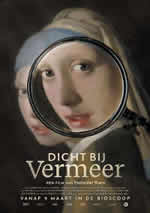
- Producer: Ilja Roomans
- Writer: Suzanne Raes
- Photography: Victor Horstink
- Sound: Alex Booy
- Editor: Noud Holtman
- Music: Alex Simu
- Distributor: Kino Lorber
- Cast: Gregor Weber, Pieter Roelofs, Anna Krekeler, Abbie Vandivere, Jonathan Janson
- Subtitles in English (original language: Dutch)
In Close to Vermeer, award-winning director Suzanne Raes gives us a unique insight into the realization of the largest Vermeer exhibition ever. She films Rijksmuseum curators Gregor Weber and Pieter Roelofs and conservators Abbie Vandivere and Anna Krekeler in their mission to shine a new light on Johannes Vermeer. For although The Milkmaid and Girl with a Pearl Earring are world-famous, we know little about the painter himself. No self-portraits, no letters, no notes; a small oeuvre is all that the Dutch Master left behind.
This fascinating documentary shows everything from the quiet diplomacy required to get the Vermeers to the Netherlands and the new knowledge gained by scanning the paintings layer by layer, to the shocking world news that one work may not be by Vermeer after all. Slowly we discover how Vermeer was able to depict reality so differently from his contemporaries. But above all, Close to Vermeer shows the infectious love of the curators and other protagonists for Vermeer’s art. As Weber lovingly puts it, "A good exhibition should change your view of the world. Vermeer can really do that."
Suzanne Raes studied Cultural Studies in Amsterdam and began her career as a researcher and chief editor for various television programs. Since 2001 she has worked as an independent director of creative documentaries on subjects such as illegal cleaners, old activists and artists. She makes accessible and engaging films that are screened worldwide and have a long life even after broadcast.
CLOSE TO VERMEER is a Docmakers production in co-production with NTR, supported by CoBO, the Netherlands Film Production Incentive, the Netherlands Film Fund, Fonds 21
Vermeer and the Art of Love: A Thoughtful Consideration of Vermeer's Painted Meditation of Lovea
Aneta Georgievska-Shine2022
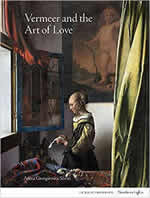
Vermeer and the Art of Love is about the emotions evoked in those elegant interiors in which a young woman may be writing a letter to her absent beloved or playing a virginal in the presence of an admirer. But it is also about the love we sense in the painter’s attentiveness to every detail within those rooms, which lends even the most mundane of objects the quality of something extraordinary.
In this engaging and beautifully illustrated book, Georgievska-Shine uncovers the ways in which Vermeer challenges the dichotomies between 'good' and 'bad' love, the sensual and the spiritual, placing him within the context of his contemporaries to give the reader a fascinating insight into his unique understanding and interpretation of the subject.
Vermeer and the Art of Love deals with private emotions evoked in domestic interiors in which a young woman may be writing a letter to her absent beloved or playing a virginal in the presence of an admirer. But it is also about the love we sense in the painter’s attentiveness to every detail within those rooms, which lends even the most mundane of objects the quality of something extraordinary. In this engaging book, the author uncovers the ways in which Vermeer challenges the dichotomies between 'good' and 'bad' love, the sensual and the spiritual, placing him within the context of his contemporaries, as well as within the broader discourse on love and art in early modern Europe.
Aneta Georgievska-Shine is an academic and writer. A senior lecturer in the Department of Art History at the University of Maryland, she has published widely on early modern art, including the books Rubens, Velázquez, and the King of Spain (co-authored, Ashgate, 2014) and Rubens and the Archaeology of Myth (Ashgate, 2009).
The Little Street: The Neighborhood in Seventeenth-Century Dutch Art and Culture
Linda Stone-Ferrier2022
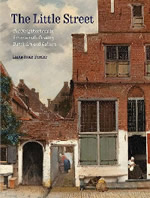
The neighborhood was a principal organizing structure of Dutch cities in the seventeenth century, and each had its own regulations, administrators, social networks, events, and diverse population of residents. Linda Stone-Ferrier argues that this sense of community contributed to the steady demand for pictures portraying aspects of this culture. These paintings, by such artists as Jan Steen and Pieter de Hooch, reinforced the role and values of the neighborhood. Through close readings of such works—by Steen and De Hooch and, among others, Gerrit Dou, Gabriel Metsu, Jacob van Ruisdael, and Johannes Vermeer—Stone-Ferrier deftly considers social history, urban studies, anthropology, and women’s studies in this penetrating exploration. Her new interpretations of seventeenth-century Dutch painting across genres—scenes of streets, domesticity, professions, and festivity—challenge existing paradigms in Dutch art history.
Of the approximately thirty-four paintings attributed to Vermeer—whose extraordinary art has captivated viewers since his rediscovery in the nineteenth century—wall maps and other cartographic objects are depicted in nine of them, including The Frick Collection’s renowned Officer and Laughing Girl and the artist’s masterpiece in Vienna’s Kunsthistorisches Museum, The Art of Painting. With stunning reproductions and incisive text, the Frick’s new publication, Vermeer’s Maps, is the most comprehensive study of the artist's depiction of wall maps to date. Drawing on rare surviving examples of the physical maps and other primary sources, author Rozemarijn Landsman examines this intriguing aspect of Vermeer’s work, greatly enriching and expanding our understanding of the art and life of the "Sphinx of Delft. As Landsman writes in the book’s introduction:
While scholars continue to remark on the prominence of maps in Vermeer’s art, these objects are rarely the center of attention. […] Questions about the maps in Vermeer’s paintings linger: What kinds of maps are they? How were they made? For whom were they produced? What were their functions? Above all, the questions of what maps meant for Vermeer and his art and what may have motivated him to choose these specific objects to adorn his painted walls remain to be addressed.
Despite numbering at just 35, his works have prompted a New York Times best seller; a film starring Scarlett Johansson and Colin Firth; record visitor numbers at art institutions from Amsterdam to Washington, DC; and special crowd-control measures at the Mauritshuis, The Hague, where thousands flock to catch a glimpse of the enigmatic and enchanting Girl with a Pearl Earring, also known as the "Dutch Mona Lisa."
In his lifetime, however, the fame of Vermeer barely extended beyond his native Delft and a small circle of patrons. After his death, his name was largely forgotten, except by a few Dutch art collectors and dealers. Outside of Holland, his works were even misattributed to other artists. It was not until the mid-19th century that Vermeer came to the attention of the international art world, which suddenly looked upon his narrative minutiae, meticulous textural detail, and majestic planes of light, spotted a genius, and never looked back.
This 40th anniversary edition showcases the complete catalog of Vermeer’s work, presenting the calm yet compelling scenes so treasured in galleries across Europe and the United States into one monograph of utmost reproduction quality. Crisp details and essays tracing Vermeer’s career illuminate his remarkable ability not only to bear witness to the trends and trimmings of the Dutch Golden Age but also to encapsulate an entire story in just one transient gesture, expression, or look.
Looking Over Vermeer's Shoulder is a comprehensive study of the materials and painting techniques that made Vermeer one of the greatest masters of European art. But to gain the clearest picture of Vermeer's day-to-day methods we must not only look at what went on his inside studio but inside the studios of his most accomplished colleagues as well.
Looking Over Vermeer's Shoulder, then, lays out in clear, comprehensible language every facet of 17th-century painting practices including training, canvas preparation, underdrawing, underpainting, glazing, palette, brushes, pigments and composition. Also investigated are a number of key issues as they relate specifically to Vermeer such as the camera obscura, studio organization as well as how he depicted wall-maps, floor tiles, pictures-within-pictures, Turkish carpets and other of his most characteristic motifs.
Bolstered by his qualifications as a practicing painter and a Vermeer connoisseur, the three-volume PDF format permits the author to address each of the eBook's 24 topics with requisite attention. By observing at close quarters the studio practices of Vermeer and his preeminent contemporaries, the reader will acquire a concrete understanding of 17th-century painting methods and gain a fresh view of Vermeer's 35 works of art, which reveal a seamless unity of craft and poetry.
While not written as a "how-to" manual, aspiring realist painters will find a true treasure trove of technical information that can be adapted to almost any style of figurative painting.
Looking Over Vermeer's Shoulder
author: Jonathan Janson
date: 2020 (second edition)
price: $29.95
pages: 294
illustrations: 200-plus illustrations and diagrams
format: PDF (3 volumes)
VOL I
1 / Vermeer's Training, Technical Background and Ambitions
2 / An Overview of Vermeer’s Technical & Stylistic Evolution
3 / Fame, Originality & Subject Matter
4 / Reality or Illusion: Did Vermeer’s Interiors ever Exist?
5 / Color
6 / Composition
7 / Mimesi & Illusionism
VOL II
8 / Perspective
9 / Camera Obscura Vision
10 / Light & Modeling
11 / Studio
12 / Four Essential Motifs in Vermeer’s Oeuvre
13 / Drapery
14 / Painting Flesh
VOL III
15 / Canvas
16 / Grounding
17 / "Inventing," or Underdrawing
18 / "Dead-Coloring," or Underpainting
19 / "Working-up," or Finishing
20 / Glazing
21 / Mediums, Binders & Varnishes
22 / Paint Application & Consistency
23 / Pigments, Paints & Palettes
24 / Brushes & Brushwork
25 Things You (Probably) Dindn't Know about Vermeer
Jonathan Janson (author of Essential Vermeer website)2021
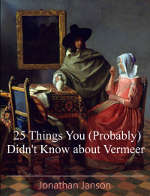
Did Vermeer make mistakes? What is the Milkmaid preparing in her kitchen? Is the Girl with a Pearl Earring really a masterpiece and is her pearl a fake? Why did the artist's reputation vaporize so quickly after he died and why is he so famous today? What tricks and special colors did he use?
Bolstered by his lifelong study of Vermeer and decades of experience as a professional painter, Jonathan Janson reveals Vermeer's life and art in human, down-to-earth terms.
For anyone interested in Vermeer the man and Vermeer's art, rather than his myth, 25 Things You Didn't Know about Vermeer offers rare glimpses into the artist's day-to-day experiences and struggles both inside and outside the confines of his studio.
Credit card in not required
On the occasion of the ground breaking Vermeer exhibition, Vermeer: On Reflection in Dresden, the Staatliche Kunstsammlungen Dresden has published a sumptuously illustrated catalogue that will illustrate the relationships and interactions in the work of the Delft painter and his fellow artists. The catalogue brings together texts by renowned authors who address both the restored work and fundamental questions about the style and essence of Vermeer's painting, his optical realism, his love symbolism and the world of women in the so-called Golden Age.
preorder here:
https://verlag.sandstein.de/detailview?no=98-610
thumb through the catalogue at:
https://verlag.sandstein.de/reader/98-611_Vermeer-engl/
essays:
- STEPHAN KOJA - From the Inner Support of the World: Vermeer's Painting as Spaces for Reflection
- ARTHUR K. WHEELOCK JR - Johannes Vermeer: A Classicist among Genre Painters
- MARJORIE E. WIESEMAN - Women in the Republic of United Netherlands: Genre Painting and Society in the Second Half of the 17th Century
- ROBERT FUCCI - Curtains and Perspectives: Vermeer's Optical Realism
- GREGOR J. M. WEBER - Cupid in Vermeer's Paintings
- UTA NEIDHARDT - Interplay of Art and Life: Vermeer's Girl Reading a Letter at the Open Window in a New Shape
The Woman Who Stole Vermeer: The True Story of Rose Dugdale and the Russborough House Art Heist
Anthony M. Amore2020
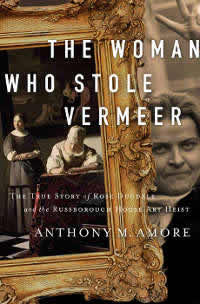
from the Amazon website:
The extraordinary life and crimes of heiress-turned-revolutionary Rose Dugdale, who in 1974 became the only woman to pull off a major art heist.
In the world of crime, there exists an unusual commonality between those who steal art and those who repeatedly kill: they are almost exclusively male. But, as with all things, there is always an outlier—someone who bucks the trend, defying the reliable profiles and leaving investigators and researchers scratching their heads. In the history of major art heists, that outlier is Rose Dugdale.
Dugdale’s life is singularly notorious. Born into extreme wealth, she abandoned her life as an Oxford-trained PhD and heiress to join the cause of Irish Republicanism. While on the surface she appears to be the British version of Patricia Hearst, she is anything but.
Dugdale ran head-first towards the action, spearheading the first aerial terrorist attack in British history and pulling off the biggest art theft of her time. In 1974, she led a gang into the opulent Russborough House in Ireland and made off with millions in prized paintings, including works by Goya, Gainsborough, and Rubens, as well as Lady Writing a Letter with her Maid by the mysterious master Johannes Vermeer. Dugdale thus became—to this day—the only woman to pull off a major art heist. And as Anthony Amore explores in The Woman Who Stole Vermeer, it’s likely that this was not her only such heist.
The Woman Who Stole Vermeer is Rose Dugdale’s story, from her idyllic upbringing in Devonshire and her presentation to Elizabeth II as a debutante to her university years and her eventual radical lifestyle. Her life of crime and activism is at turns unbelievable and awe-inspiring, and sure to engross readers.
This exhibition on late 16th- and early 17th-century Dutch and Spanish painting is the result of an extensive and important research project on the part of the Museum arising from a collaborative agreement with the Rijksmuseum in Amsterdam, which will be lending a significant group of works.
The exhibition will offer a reflection on the pictorial traditions represented by Spain and the Low Countries. While the art-historical literature, particularly that generated in Holland, has considered these traditions as essentially different, this exhibition will aim to juxtapose the historical myths and artistic realities of the two countries and to reflect on the numerous traits that they share. In order to appreciate these parallels the exhibition will include major works by artists such as Velázquez, Rembrandt, Ribera, Frans Hals and Vermeer.
The subject of writing and receiving letters, which recurs frequently in the work of Vermeer, is given dramatic tension in this masterful painting of two women in a mysterious moment of crisis. The artist seldom, if ever, surpassed the subtly varied effects of light seen here as it gleams from the pearl jewellery, sparkles from the glass and silver objects on the table, and falls softly over the figures in their shadowy setting.
Margaret Iacono is associate research curator at The Frick Collection. Her areas of interest include northern European painting of the fifteenth to seventeenth centuries and the history of collecting. Most recently she organized Vermeer, Rembrandt, and Hals: Masterpieces of Dutch Painting from the Mauritshuis (2014), and also served as the Frick coordinator for The Frick Collection: Art Treasures in New York, held at the Mauritshuis, The Hague (2015).
 from Oxford University press release:
from Oxford University press release:
Jane Jelley has taken a new path in this detective story. A painter herself, she has worked with the materials of his time: the cochineal insect and lapis lazuli; the sheep bones, soot, earth and rust. She shows us how painters made their pictures layer by layer; she investigates old secrets; and hears travelers' tales. She explores how Vermeer could have used a lens in the creation of his masterpieces, and made some experiments in her own studio to transfer images from projections directly to a canvas. She has found a reliable solution that corresponds to the scientific examination of Vermeer's work, which provides answers to some of the puzzles he left behind.
The clues were there all along. After all this time, now we can unlock the studio door, and catch a glimpse of Vermeer inside, painting light.
Jane Jelley is a painter of still life and landscape who became interested in the unusual technical qualities of Vermeer's painting, and in the arguments about whether or not he might have used a camera obscura in his work. Jane lives and works in Oxford. More information about Jane and her work can be found on http://tracesofvermeer.com/index.html.
 A low-threshold, high-level introduction to Vermeer based on 140 large and lavish details from his work. In this highly original approach, each detail is provided with commentary, covering subject matter, technique and modes of picture-making, the origins of the objects Vermeer paints, comparisons of motifs and scholarly discussion concerning his work.
A low-threshold, high-level introduction to Vermeer based on 140 large and lavish details from his work. In this highly original approach, each detail is provided with commentary, covering subject matter, technique and modes of picture-making, the origins of the objects Vermeer paints, comparisons of motifs and scholarly discussion concerning his work.
Preceded by a capsule biography, concise entries and illustrations of the 37 paintings currently given to Vermeer, including the disputed attributions.
Purchase of the volume provides the buyer with exclusive access to a website with high-resolution images of the complete paintings.
 This book describes an incredible detective story: the story of the exact location of Vermeer's famous Little Street which has occupied art historians for centuries. Executed circa 1657–1658, and depicting a quiet street, typical of a Dutch Golden Age town, this painting is one of Vermeer's most beloved. The location of the street, however, has always been a mystery. Did Vermeer paint his own house, a view of someone else's house, or did he invent the composition? Frans Grijzenhout, Professor of Art History at the University of Amsterdam, consulted 17th-century records that had never before been used for this purpose, which clearly indicate the site of the street. (It is Vlamingstraat in Delft, at the point where the present-day numbers 40 and 42 stand.) Grijzenhout's story made the news worldwide, and is related in this affordable volume. The discovery sheds new light on Vermeer's life and work, and his family.
This book describes an incredible detective story: the story of the exact location of Vermeer's famous Little Street which has occupied art historians for centuries. Executed circa 1657–1658, and depicting a quiet street, typical of a Dutch Golden Age town, this painting is one of Vermeer's most beloved. The location of the street, however, has always been a mystery. Did Vermeer paint his own house, a view of someone else's house, or did he invent the composition? Frans Grijzenhout, Professor of Art History at the University of Amsterdam, consulted 17th-century records that had never before been used for this purpose, which clearly indicate the site of the street. (It is Vlamingstraat in Delft, at the point where the present-day numbers 40 and 42 stand.) Grijzenhout's story made the news worldwide, and is related in this affordable volume. The discovery sheds new light on Vermeer's life and work, and his family.
Masters of the Everyday: Dutch Artists in the Age of Vermeer
Adriaan E. Waiboer, with Arthur K. Wheelock Jr. and Blaise Ducos2016
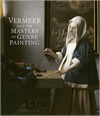
 from the Yale University Press website:
from the Yale University Press website:
The genre painting of the Dutch Golden Age between 1650 and 1675 ranks among the highest pinnacles of Western European art. The virtuosity of these works, as this book demonstrates, was achieved in part thanks to a vibrant artistic rivalry among numerous first-rate genre painters working in different cities across the Dutch Republic. They drew inspiration from each other's painting, and then tried to surpass each other in technical prowess and aesthetic appeal.
The Delft master Johannes Vermeer is now the most renowned of these painters of everyday life. Though he is frequently portrayed as an enigmatic figure who worked largely in isolation, the essays here reveal that Vermeer's subjects, compositions and figure types in fact owe much to works by artists from other Dutch cities. Enlivened with 180 superb illustrations, Vermeer and the Masters of Genre Painting highlights the relationships—comparative and competitive—among Vermeer and his contemporaries, including Gerrit Dou, Gerrit ter Borch, Jan Steen, Pieter de Hooch, Gabriel Metsu, and Frans van Mieris.
authors:
Adriaan E. Waiboer is curator of northern European art at the National Gallery of Ireland. Arthur K. Wheelock Jr. is curator of northern Baroque paintings at the National Gallery of Art, Washington. Blaise Ducos is curator of seventeenth-and eighteenth-century Dutch and Flemish paintings at the Musée du Louvre. With essays by Marjorie E. Wiesemanr, Eric Jan Sluijter, Piet Bakker and Melanie Gifford
- Director: Jean-Pierre Cottet, Guillaume Cottet
- Producer: James Mitchell
- Coproduction: Martange Production (Paris), Soho Moon Pictures (Dublin), Arte France and the Louvre
- Duration: 86 minutes
- Release date: 2017
Initially shown in conjunction with the exhibition Vermeer and the Masters of Genre Painting: Inspiration and Rivalry, (Paris, Dublin and Washington D.C.) Vermeer, Beyond Time focuses on the artist's family life, his artistic contemporaries, his conversion to Catholicism, and the wider world of the seventeenth-century Dutch Golden Age.
Cottet's remarkable film, which is probably the best introduction to the enigmatic painter currently available, explores the individual paintings and teases out what has come to be known as the Vermeer style; the representation of light, the interplay of color and the effects of perspective across the same themes, places and objects.
Purchase at PBS - https://amzn.to/40rDhm0
Masters of the Everyday: Dutch Artists in the Age of Vermeer
Desmond Shawe-Taylor and Quentin Buvelot2015

The exhibition At Home in Holland: Vermeer and his Contemporaries from the British Royal Collection is accompanied by a richly illustrated catalogue in both English and Dutch, published by Royal Collection Trust, the Mauritshuis and Mercatorfonds. The catalogue was written by the exhibition's curators, Desmond Shawe-Taylor (Surveyor of the Queen's Pictures, Royal Collection Trust) and Quentin Buvelot (Senior Curator at the Mauritshuis). Masters of the Everyday: Dutch Artists in the Age of Vermeer is currently available in the shop at the Mauritshuis.
price: €29,95)
review:
Masters of the Everyday is splendid, featur[ing] comprehensive, lavishly illustrated entries on twenty-seven beautiful pictures by some of the most outstanding Dutch masters of the seventeenth century
— HNA Review of Books, Historians of Netherlandish Art 2016-05-16)
In this new monograph, the latest in Phaidon's Art and Ideas series, Wayne Franits examines the work of Vermeer within the framework of his times, one of the most intellectually creative periods in this history of art. Written in a lively and accessible style, and incorporating the latest scholarship on the artist, Franits provides fresh insights into many of Vermeer's most famous works, uncovering the creative process behind them and their wealth of meanings. All paintings by Vermeer are illustrated.
about the author:
Wayne Franits, a specialist in seventeenth-century Dutch and Flemish art, is Professor of Art History at Syracuse University, New York. His numerous publications have explored a variety of topics within the field, ranging from genre painting and portraiture to the work of the Dutch followers of Caravaggio.
Michael Whites's Travels in Vermeer: A Memoir made the National Book Awards longlist for Nonfiction. Finalists will be announced on October 14th, and winners will be announced at a ceremony in New York on November 18th.
from publisher's website:
A lyrical and intimate account of how a poet, in the midst of a bad divorce, finds consolation and grace through viewing the paintings of Vermeer, in six world cities. In the midst of a divorce (in which the custody of his young daughter is at stake) and over the course of a year, the poet Michael White, travels to Amsterdam, The Hague, Delft, London, Washington and New York to view the paintings of Johannes Vermeer, an artist obsessed with romance and the inner life. He is astounded by how consoling it is to look closely at Vermeer's women, at the artist's relationship to his subjects, and at how composition reflects back to the viewer such deep feeling. Includes the author's very personal study of Vermeer. Through these travels and his encounters with Vermeer's radiant vision, White finds grace and personal transformation.
from publisher's website:
Through the paintings of Vermeer, Michael White explores new landscapes and transforms familiar ones in this extraordinary new collection of poems. This captivating masterwork transports us across eras and continents, from Confederate lynchings to the bombing of Dresden, through its lyrical inhabitations of some of Vermeer's most revered paintings, each one magically described and renewed. More than mere ekphrasis, Michael White explores the transformative possibilities of great art in his fourth collection.
reviews:
"Vermeer in Hell is Michael White's museum of ghosts and shades, of narratives woven masterfully out of the personal and historical alike—out of the lived, the envisioned, the loved, and the terrible. Rarely have I felt the ekphrastic to be as dramatic as in White's tour through the portraits of Vermeer, with its history of fiery damages, wars and afflictions, but also its own depiction of 'love's face as it is.' Out of Michael White's vision, each poem achieves for us the delicacy and durability of Vermeer's own art."
—David Baker
"Nearly every one of Michael White's new poems is the equivalent of a quiet stroll through a blazing fire, igniting the reader's imagination. His insights are frightening and comforting at the same time, his craft allowing for the most surprising and thrilling of associations. Vermeer in Hell is a collection that belongs in the room with all of the traditions of our language's poetry, but it brings something completely original to us, too. It is not an overstatement to call this poetry Genius."
—Laura Kasischke
from the publisher's website:
El luthier de Delft es una obra que analiza la música (aunque también el arte y la ciencia) del siglo XVII, especialmente centrada en la cultura neerlandesa. El libro gira en torno a tres personajes centrales, el pintor Jan Vermeer, el filósofo Baruch Spinoza y el músico Jan Pietrszoon Sweelinck. A partir de ellos, el lector se encontrará con la construcción de instrumentos musicales, sus maderas y barnices, así como con el papel de la mujer en el arte y la música; la vida de los pintores y el mundo simbólico de sus obras y los estudios científicos destinados a la óptica y la difusión del telescopio. Un libro lleno de resonancias y armonías, sabiduría y sutileza.
(The luthier of Delft is a work that analyzes the music (but also art and science) of the seventeenth century, especially focusing on Dutch culture. The book revolves around three central characters, the painter Johannes Vermeer, the philosopher Baruch Spinoza and musician Jan Sweelinck Pietrszoon. From them, the reader will find the construction of musical instruments, their woods and varnishes, as well as the role of women in art and music; the lives of the painters and the symbolic world of his works and scientific studies for the optical telescope and dissemination. The book isfull of resonances and harmonies, wisdom and subtlety.
Ramon Andrés is a celebrated spanish musicologist and essay-writer.
from the Taschen website:
The Dutch Republic in the seventeenth century was home to one of the greatest flowerings of painting in the history of Western art. Freed from the constraints of royal and church patronage, artists created a rich outpouring of works that circulated through an open market to patrons and customers at every level of Dutch society. The closely observed details of daily life captured in portraits, genre scenes and landscapes offer a wealth of information about the possessions, activities and circumstances that distinguished members of the social classes, from the nobility to the urban poor. The dazzling array of paintings gathered here—by artists such as Frans Hals, Jan Steen, Pieter de Hooch and Gerrit ter Borch, as well as Rembrandt and Vermeer—illuminated by essays from leading scholars, invites us to explore a vibrant early modern society and its reflection in a golden age of brilliant painting.
This extra-large edition brings together the complete catalog of Vermeer's work, presenting the calm yet compelling scenes so treasured in galleries across Europe and the United States into one monograph of utmost reproduction quality. With brand new photography of many works, Vermeer's restrained but richly evocative repertoire of domestic actions—ranging from letter writing to music making to preparations in the kitchen—unfolds in a generous format, including three fold-out spreads. Numerous details emphasize the artist's remarkable ability not only to bear witness to the trends and trimmings of the Dutch Golden Age but also to encapsulate an entire story in just one transient gesture, expression, or look.
Class Distinctions: Dutch Painting in the Age of Rembrandt and Vermeer
Ronni Baer with essays by Henk van Nierop, Herman Roodenburg, Eric Jan Sluijter, Marieke de Winkel, and Sanny de Zoete2015

The Dutch Republic in the 17th century was home to one of the greatest flowerings of painting in the history of Western art. Freed from the constraints of royal and church patronage, artists created a rich outpouring of works that circulated through an open market to patrons and customers at every level of Dutch society. The closely observed details of daily life captured in portraits, genre scenes and landscapes offer a wealth of information about the possessions, activities and circumstances that distinguished members of the social classes, from the nobility to the urban poor. The dazzling array of paintings gathered here—by artists such as Frans Hals, Jan Steen, Pieter de Hooch and Gerrit ter Borch, as well as Rembrandt and Vermeer—illuminated by essays from leading scholars, invites us to explore a vibrant early modern society and its reflection in a golden age of brilliant painting.
Eye of the Beholder: Johannes Vermeer, Antonie van Leeuwenhoek, and the Reinvention of Seeing
Laura J. Snyder2015
from the publisher's website:
In Eye of the Beholder, Laura J. Snyder transports us to the streets, inns and guildhalls of seventeenth-century Holland, where artists and scientists gathered, and to their studios and laboratories, where they mixed paints and prepared canvases, ground and polished lenses, examined and dissected insects and other animals, and invented the modern notion of seeing. With charm and narrative flair Snyder brings Vermeer and Van Leeuwenhoek—and the men and women around them—vividly to life. The story of these two geniuses and the transformation they engendered shows us why we see the world—and our place within it—as we do today.
This unique travelogue tells the story of a simple idea from Japanese biologist Dr. Shin-Ichi Fukuoka-to see all of the extant Vermeer paintings in the galleries where they are permanently housed. The resulting journey takes him on a four year pilgrimage around the world, from art to science and back again, in pursuit of the mysteries of the Master of Light.
Holland's Golden Age in America: Collecting the Art of Rembrandt, Vermeer, and Hals (The Frick Collection Studies in the History of Art Collecting in America)
Esmée Quodbach2014

from the Pennsylvania State University Press website:
Americans have long had a taste for the art and culture of Holland's Golden Age. As a result, the United States can boast extraordinary holdings of Dutch paintings. Celebrated masters such as Rembrandt van Rijn, Johannes Vermeer, and Frans Hals are exceptionally well represented, but many fine paintings by their contemporaries can be found as well. In this groundbreaking volume, fourteen noted American and Dutch scholars examine the allure of seventeenth-century Dutch painting to Americans over the past centuries. The authors of Holland's Golden Age in America explain in lively detail why and how American collectors as well as museums turned to the Dutch masters to enrich their collections. They examine the role played by Dutch settlers in colonial America and their descendants, the evolution of American appreciation of the Dutch school, the circumstances that led to the Dutch school swiftly becoming one of the most coveted national schools of painting, and, finally, the market for Dutch pictures today. Richly illustrated, this volume is an invaluable contribution to the scholarship on the collecting history of Dutch art in America, and it is certain to inspire further research.
In addition to the editor, the contributors are Ronni Baer, Quentin Buvelot, Lloyd DeWitt, Peter Hecht, Lance Humphries, Walter Liedtke, Louisa Wood Ruby, Catherine B. Scallen, Annette Stott, Peter C. Sutton, Dennis P. Weller, Arthur K. Wheelock, Jr., and Anne T. Woollett.
This book provides answers for anyone who has ever wondered why there are so many great Dutch paintings in U.S. collections. Essays by leading curators and scholars draw on the history of art, as well as an understanding of cultural, economic and political conditions, to illuminate the American taste for seventeenth-century Dutch painting.
— Emilie Gordenker, Director, Mauritshuis, The Hague
Drawing on the experience and insights of many of her colleagues in museums and the academy, Esmée Quodbach brings us an impressively broad overview of the early collectors of Dutch art in America. This essential volume provides illuminating context for major figures such as J. P. Morgan and welcomes unsung heroes such as Robert Gilmor, Jr., onto this stage, but also lifts the curtain on early colonial as well as contemporary collections. These varied accounts are spiked with color, drama and highlights, including the story of the wealthy collector who has to ask, "Who is Vermeer?"
— David de Witt, Bader Curator of European Art, Queen's University
Esmée Quodbach is Assistant Director of the Center for the History of Collecting at The Frick Collection and Frick Art Reference Library in New York.
The Light Theatre Opened to Universe (II): New Vermeer Theory
Kazuo Ueno
2014
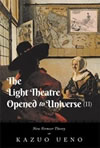
Every art historian nowadays except Ueno dismissed hidden influence to Vermeer from Christiaan Huygens, who is the most powerful Light physics and astronomy researcher in the seventeenth century. Because unlike Leewenhoek's close relation to Vermeer, it was neglected or underestimated until now, the event a father of Christiaan, Constantijn Huygens who is most influential musician and politician on that time, visited Vermeer's atelier with his friends. People also dismissed the fact that Christiaan Huygens invented microtonal music theory. According to Ueno, Constantijn Huygens' interest for Vermeer's painting shows he is the most possible candidate for the person who stands intersection between painting, music and physics in the history of all subjects.
Ueno masterfully lays out the elements of faith in Vermeer's use of warped optics in his carefully composed paintings and the Japanese art concept called "Mitate" (literally translated: look alike, originally coming from eighteenth-century Japanese Ukiyo-e painter Suzuki Harunobu)—from this, he proceeds to a brilliant exposition of a new theory for the pictorial universe that creates depth of perception and the greater understanding of light in relation to what is seen; eventually, Man becoming Altair, Woman Vega in his painting Officer and a Laughing Girl.
reveiw from:
"Kazuo Ueno, Kazuo Ueno Discusses New Theory of Light in New Book: The role of light in both science and art according to Ueno's The Light Theatre Opened to Universe (II) provides a continuity between both realms that provides important insights for light's future roles in human life."
http://www.prweb.com/releases/KazuoUeno/02/prweb11547504.htm
TOKYO (PRWEB) February 04, 2014
Girl with a Pearl Earring: Dutch Paintings from the Mauritshuis
Lea van der Vinde, with contributions from Quentin Buvelot, Lynn Federle Orr, Emilie Gordenker, Petria Noble and Ariane van Suchtelen
2014
(110 color illustrations)
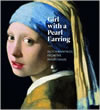
from Amazon.com:
Housed in a splendid seventeenth-century palace in The Hague, the Royal Picture Gallery Mauritshuis is home to some of the world's most beloved paintings—including Vermeer's Girl with a Pearl Earring—and has become a destination for art enthusiasts from around the world. This engaging, accessible companion volume to a long-awaited exhibition guides readers through the highlights of the collection as if they were wandering the historic rooms themselves. A lavish plate section features 35 works, each accompanied by texts that explore its historical provenance and individual significance. Curatorial essays describe the building's founder, Count Johan Maurits, and his experience as a Dutch colonist in the New World; the formation of the collection; and also recent discoveries about the materials and techniques employed by these great artists. Fans of Vermeer's iconic masterpiece will delight in discovering that it is one of many beautiful artworks in the Mauritshuis's elegant rooms.
Published to accompany the exhibition Vermeer and Music: The Art of Love and Leisure at the National Gallery, London 26 June–8 September, 2013.
from the National Gallery website:
Music was among the most popular motifs in paintings of the Dutch Golden Age. This attractive, accessible book presents a selection of seventeenth-century Dutch paintings with musical themes, juxtaposed with contemporary instruments and popular songbooks. By offering an overview of musical entertainment in the Dutch Republic during the seventeenth century, and outlining some of the diverse connotations of music in art, Vermeer and Music is a new insight into the significance of these popular images.
Five magnificent paintings by Johannes Vermeer—the National Gallery's A Young Woman standing at a Virginal and A Young Woman seated at a Virginal, The Music Lesson (The Royal Collection), Young Woman seated at a Virginal (private collection), and The Guitar Player, on loan from Kenwood House, London—form the heart of this book. Vermeer and Music enhances our appreciation of these extraordinary paintings—as well as related pictures by other Dutch masters—with an in-depth exploration of their subject matter.
This book is generously illustrated with details of paintings and musical instruments, showcasing the extraordinary craftsmanship of these works. Vermeer and Music also features details from a selection of seventeenth-century songbooks, charming volumes filled with love songs, poems and illustrations of amorous duets. Vermeer and Music will appeal to anyone who loves music, or the art of Vermeer and his illustrious contemporaries.
The Rijksmuseum Bulletin 2012 - No. 1
"The restoration of 'Woman in Blue Reading' a Letter by Johannes Vermeer"
by IGE VERSLYPE
"A Question of Framing: On Vermeer's 'Woman in Blue Reading a Letter'
by GREGOR J.M. WEBER
Click here to purchase, https://bulletin.rijksmuseum.nl/issue/view/380
Millicent Clermont must learn what is real or fake in art, life and love. A painting discovered in her mentor's Virginia plantation is on the list of Nazi looted art. Is it a real Vermeer? Was does the secret code in the overpainting mean and why will people kill for it? From the majestic halls of the National Gallery of Art, Washington, DC, and the luscious landscapes of Virginia, to Paris, Jerusalem, and Germany, readers will be enthralled with fascinating details of painting authentication, forgeries, and the Nazi desecration of the world's cultural treasures.
Oklahoma Book Awards 2013
Focusing on the extraordinary Lacemaker from the Musée du Louvre, this beautiful book investigates the subtle and enigmatic paintings by Johannes Vermeer that celebrate the intimacy of the Dutch household. Moments frozen in paint that reveal young women sewing, reading or playing musical instruments, captured in Vermeer's uniquely luminous style, recreate a silent and often mysterious domestic realm, closed to the outside world, and inhabited almost exclusively by women and children.
Three internationally recognized experts in the field explain why women engaged in mundane domestic tasks, or in pleasurable pastimes such as music making, writing letters, or adjusting their toilette, comprise some of the most popular Dutch paintings of the seventeenth century. Among the most intriguing of these compositions are those that consciously avoid any engagement with the viewer. Rather than acknowledging our presence, figures avert their gazes or turn their backs upon us; they stare moodily into space or focus intently on the activities at hand. In viewing these paintings, we have the impression that we have stumbled upon a private world kept hidden from casual regard.
Human Connections in the Age of Vermeer
Arthur K. Wheelock Jr. and Danielle H.A.C. LokinScala Publishers Ltd
2011

This book focuses on the many forms of communication that existed in seventeenth-century Dutch society between family members, lovers and professional acquaintances, both present and absent. The forty-four carefully selected Dutch genre paintings include major works by many of the finest masters of the period, including Johannes Vermeer, Pieter de Hooch, Gerrit ter Borch and Gabriel Metsu. Vermeer's three masterpieces about love letters form the core of the exhibition as they are profound examples of the power of communication. Dutch artists of the seventeenth century portrayed the wide range of emotions elicited by the various forms of communication, not only in the manner in which they render gestures and facial expressions of personal interactions, but also in the ways in which they show men and women responding to the written word. The painters often introduced objects from daily life that had symbolic implications, among them musical instruments, to enrich the pictorial narratives of their scenes. Published in conjunction with the exhibition Communication: Visualizing the Human Connection in the Age of Vermeer (2011–2012), which celebrates the 400th anniversary of the diplomatic exchanges between Japan and the Netherlands, this book connects the pictorial and the literary aspects of Dutch cultural traditions during the Golden Age.
The Young Vermeer
Edwin Buijsen et al.2010
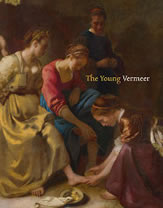
This exhibition catalogue, with informative text and fine reproductions, delves into the three paintings from the beginning of Vermeer's artistic career: the Mauritshuis' Diana and her nymphs of c. 1653–1654, the Christ in the house of Martha and Mary (c. 1654–1656) and the National Gallery of Scotland in Edinburgh, and The Procuress (1656) from the Staatliche Kunstsammlungen in Dresden.
Der frühe Vermeer (in German only)
edited by Uta Neidhardt
Deutscher Kunstverlag Berlin/München, 2010
ISBN 9783422070387
„Der frühe Vermeer" is the catalogue of the exhibition of the same name held at the Dresden Gemäldegalerie Alte Meister in 2010. The catalogue offers an in-depth exploration of the Vermeer's early production in essays written by distinguished experts in the field of Dutch art. The exhibition featured major works of other artists to accompany each of the three surviving early works. Selected on the basis of their quality and expressive power, these works illustrate in a particularly striking way what inspired Vermeer's quest for his own style and independence vis-à-vis his role models. Museums and collections around the world loaned works by famous artists like Jacob Jordaens, Dirck van Baburen, Peter Paul Rubens, Leonaert Bramer, Giovanni Biliverti and Hendrick ter Brugghen, which allowed visitors of the exhibition to gain important insights into the early stages of Vermeer's artistic development.
essays by author in alphabetical order:
- Albert BLANKER - "A Young Artist Seeks his Purpose"
- Edwin BUIJSEN - "The Young Vermeer: Education, Development and Sources of Inspiration"
- Edwin BUIJSEN - "The Rediscovery of the 'Young Vermeer'"
- Michael FRANSES - "Oriental Carpets in the Paintings of Vermeer"
- Juliane GATOMSKI - "Of Doubt and Amazement: The Dutch Natural Sciences in the 17th Century"
- Rainer GROH and Daniel LORDICK - "Reverse Painting: Remarks on the Reconstruction of the Room in Vermeer's 'Girl Reading a Letter at an Open Window'"
- Jasper KETTNER - "Delft Tracks: The Young Vermeer and the Painting of his Hometown"
- Ivo MOHRMANN and Thomas SCHEUFLER - "From Space to Image and Back: A Room Presentation at the Dresden Academy of Fine Arts"
- Uta NEIDHARDT - "Johannes Vermeer's 'The Procuress': An Experiment with an Open Ending?"
- Uta NEIDHARDT - "Johannes Vermeer's 'Girl Reading a Letter at the Open Window': A Gifted Young Painter Orients Himself"
- Christoph SCHÖLZEL - "On the Creation of the Painting 'Girl Reading a Letter at an Open Window' by Johannes Vermeer"
Vermeer
Vermeer (German only)
Nils von Büttner
2010
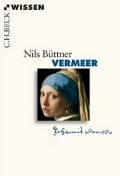
Jan Vermeer van Delft had a formative influence over our ideas of the Dutch Golden Age. Yet during his lifetime there were few indications of his later fame. His incomparable genre scenes came to typify his work. Nils Büttner's concise and lively introduction traces the painter's life, presents his work in its historical and social context and explains the pictures' symbolism, still often regarded as mysterious.
Vermeer - Die Malkunst
Sabine Pénot et. al.2010
(Paperback: in German with English translations of all essays.)
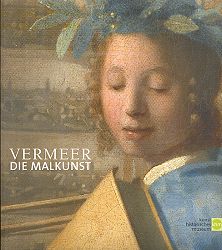
The sumptuous Kunsthistorisches Museum catalogue of The Art of Painting exhibition at the Vienna Kunsthistorisches online presents extraordinarily fine illustrations and essays.
- Aurthur K. Wheelock Jr. - "The Art of Painting"
- Sabine Pénot - "Johannes Vermeer's The Art of Painting. A Picture Marked by Light, Questions on Pictorial Invention"
- Roswitha Juffinger, Christoph Brandhuber - "The Unrecognized Masterpiece. Vermeer's Art of Painting: The Story of its Provenance"
- Günther Schilder - "Visscher's Wall Map of the Seventeen Provinces (1636) and Its Counterpart in Vermeer's Art of Painting"
- Katia Schmidt-von Ledeuber - "Remarks on the Textiles in Vermeer's The Art of Painting: Tapestry and Slashed Doublet"
- Eva Mongi-Vollmer - "Rediscovering Vermeer Art of Painting in the 19th Century"
- Roland Prügel - "Reflexive Appropriations, Critical Transformation: Paraphrases of Vermeer’s The Art of Painting in the 20th and 21st Centuries"
- Beatrix Kriller-Erdrich - "A to V: Arthur Strasser and Johannes Vermeer in the Kunsthistorisches Museum Vienna, On the Reception of a Pictorial Motif"
- Robert Wald - "The Art of Painting. Observations on Approach and Technique"
- Elke Oberthaler, Sabine Stanek, Jaap J. Boon, Martha Griesser - "The Art of Painting by Johannes Vermeer. History of Treatments and Observations on the Present Condition"
- Jaap J. Boon, Elke Oberthaler - "Mechanical Weakness and Chemical Reactivity Observed in the Paint Structure and Surface of The Art of Painting by Vermeer"
Views on Vermeer: 12 Short Stories
color, HD, 52 min2009
director - Hans Pool
photography - Hans Pool
screenplay - Koos de Wilt
Youtube.com trailer:
http://www.youtube.com/watch?v=HTGXd-wT8_A
on sale at: ICARUS FILMS.com
Johannes Vermeer (1632–1675) left us a small oeuvre of only 36 paintings. Internationally, the power of his work is now more profound than ever. Blockbuster exhibitions, the novel and movie Girl with a Pearl Earring caught a broad audience. Millions are touched by his work. What do we see in Vermeer that makes him so contemporary? The dignity of his painted ladies, the cinematic and photographic character of his images, the psychological impact, the serenity or apparent glimpse in our own everyday life? Influential contemporary artists, photographers and opinion leadersunravel the extraordinary and mysterious impact of this seventeenth-century master in our day and age. A Film by Hans Pool and Koos de Wilt.
interviews with:
Tom Hunter, Alain de Botton, Walter Liedtke, Otto Naumann, Thomas Kaplan, Chuck Close, Philip Steadman, Peter Webber, Erwin Olaf, Joel Meyerowitz, Lawrence Weschler, Tracy Chevalier, Steve McCurry, Arthur K. Wheelock, Jonathan Janson, Philip-Lorca diCorcia, Geoffrey Batchen
This 36-page catalogue of the MET exhibition Vermeer's Masterpiece: The Milkmaid discusses the painting's style, meaning, place within Vermeer's oeuvre, its first owner and later history.
The author reveals that a long tradition of amorous milkmaids and kitchen maids in Netherlandish art is continued here with such subtle understatement that the artist's intentions have been misunderstood for generations. The Metropolitan's own five paintings by Vermeer and seven other Dutch pictures in the collection are also included in the exhibition and discussed in this generously illustrated publication.
Click here for a free download at the MET bookshop.
Vermeer: Master of Light is a journey of discovery, guiding the viewer through an exploration of Vermeers paintings and examining the secrets of his technique.
Since his rediscovery in the later half of the 19th century, Johannes Vermeer has been one of the most admired and influential European painters. His extremely private life, his supposed use of a camera obscura, and the fact that his teacher remains unidentified have, until recently, encouraged a view of the "Sphinx of Delft" as an isolated genius shrouded in an air of mystery. Walter Liedtke's new monograph reveals Vermeer's life to be well-documented and places his work in the context of the Delft school and of Delft society as a whole. Vermeer's many admirers will relish Liedtke's exploration of subtleties of meaning and refinements of technique and style. Alongside the most historical approach to Vermeer to date, the annotated color catalogue of Vermeer's complete paintings reveals a master whose rare sensibility may be described but not explained.
Walter Liedtke is Curator of European Paintings at the Metropolitan Museum of Art, New York. He has written extensively on Dutch painting and the Delft School.
The Man Who Made Vermeers: Unvarnishing the Legend of Master Forger Han van Meegeren
Jonathan Lopez2008
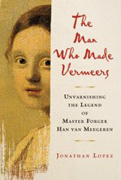
Best remembered for selling a fake Vermeer to Hermann Goering during the Second World War, Han van Meegeren never admitted to creating any fakes dating from before 1937—but there have always been rumors suggesting that his career actually began much earlier than that. Drawing upon three years of archival research conducted in five nations and interviews with the descendants of Van Meegeren's partners in crime, Jonathan Lopez reveals that Van Meegeren worked virtually his entire adult life turning out bogus old masters for a ring of art-world intriguers operating out of London and Berlin. Major dealers like Sir Joseph Duveen were stung by these forgeries, as was the great Pittsburgh banker Andrew Mellon, who bought two of Van Meegeren's fake Vermeers during the 1920s. As Koen Kleijn of De Groene Amsterdammer has remarked, "The Man Who Made Vermeers shatters the popular image of Han van Meegeren as a lone gunman or picaresque rogue. Jonathan Lopez reveals the master forger as an arch-opportunist, a cunning liar, and a fervent sympathizer of the fascist cause from as early as 1928. Deftly reconstructing an insidious network of illicit trade in the art market's underworld, Lopez allows few reputations to emerge unscathed in this gripping and delicious book."
Click here for a slide show of all the images from the book.
About the Author
JONATHAN LOPEZ's writings on art and history appear frequently in Apollo: The International Magazine of Art and Antiques, published in London. The Man Who Made Vermeers grew out of an article that originally appeared in Dutch in De Groene Amsterdammer. Lopez lives with his wife, an art historian and critic, in Manhattan.
The Forger's Spell: A True Story of Vermeer, Nazis, and the Greatest Art Hoax of the Twentieth Century
Edward Dolnick2008

As riveting as a World War II thriller, The Forger's Spell is the true story of Johannes Vermeer and the small-time Dutch painter who dared to impersonate him centuries later. The con man's mark was Hermann Goering, one of the most reviled leaders of Nazi Germany and a fanatic collector of art.
It was an almost perfect crime. For seven years a no-account painter named Han van Meegeren managed to pass off his paintings as those of one of the most beloved and admired artists who ever lived. But, as Edward Dolnick reveals, the reason for the forger's success was not his artistic skill. Van Meegeren was a mediocre artist. His true genius lay in psychological manipulation, and he came within inches of fooling both the Nazis and the world. Instead, he landed in an Amsterdam court on trial for his life.
book description
Johannes Vermeer, one of the greatest Dutch painters and for some the single greatest painter of all, produced a remarkably small corpus of work. InVermeer's Family Secrets, Benjamin Binstock revolutionizes how we think about Vermeer's work and life. Vermeer, "the Sphinx of Delft," is famously a mystery in art: despite the common claim that little is known of his biography, there is in fact an abundance of fascinating information about Vermeer's life that Binstock brings to bear on Vermeer's art for the first time; he also offers new interpretations of several key documents pertaining to Vermeer that have been misunderstood. Lavishly illustrated with more than 180 black and white images and more than sixty color plates, the book also includes a remarkable color gatefold spread that presents the entirety of Vermeer's oeuvre arranged in chronological order in 1/20 scale, demonstrating his gradual formal and conceptual development. No book on Vermeer has ever done this kind of visual comparison of his complete output. Like Poe's purloined letter, Vermeer's secrets are sometimes out in the open where everyone can see them. Benjamin Binstock shows us where to look. Piecing together evidence, the tools of art history, and his own intuitive skills, he gives us for the first time a history of Vermeer's work in light of Vermeer's life.
On almost every page of Vermeer's Family Secrets, there is a perception or an adjustment that rethinks what we know about Vermeer, his oeuvre, Dutch painting, and Western Art. Perhaps the most arresting revelation of Vermeer's Family Secrets is the final one: In response to inconsistencies in technique, materials and artistic level, Binstock posits that several of the paintings accepted as canonical works by Vermeer, are in fact not by Vermeer at all but by his eldest daughter, Maria. How he argues this is one of the book's many pleasures.
In this impressive and informative work, the artist's origins and home environment are revealed and his paintings are displayed and discussed within the context of time alongside a history of the influences and repercussions of this master's art.
This lavishly illustrated and beautifully bound edition includes reproductions of all of Vermeer's paintings, many of the works of his contemporaries, and documents relating to his life and city, Delft.
In the hands of an award-winning historian, Vermeer's dazzling paintings become windows that reveal how daily life and thought—from Delft to Beijing—were transformed in the seventeenth century, when the world first became global.
"Vermeer's Hat is a deftly eclectic book, in which Timothy Brook uses details drawn from the great painter's work as a series of entry points to the widest circles of world trade and cultural exchange in the seventeenth century. From the epicenter of Delft, Brook takes his readers on a journey that encompasses Chinese porcelain and beaver pelts, global temperatures and firearms, shipwrecked sailors and their companions, silver mines and Manila galleons. It is a book full of surprising pleasures."- Jonathan Spence, author of The Death of Woman Wang, In Search of Modern China and The Memory Palace of
—Matteo Ricci
Econ Talk: The Library of Economics and Liberty
Click here to access an excellent podcast interview with Mr. Brook by Russ Roberts.
In His Milieu: Essays on Netherlandish Art in Memory of John Michael Montias
edited by Amy Golahny, Mia Mochizuki and LisaVergara
2007

Collected in memory of the Vermeer scholar and Yale economist J. Michael Montias, these essays take into account the latest trends in the field and provide new data on a wide range of topics in Netherlandish art. Themes include the reception of paintings and architecture; art collecting as interpreted through inventories and other documents that reveal modes of display; relationships between patrons and painters; recently found or attributed works of art; artists as teachers; and the art market. Taken together, these focused studies offer fresh perspectives on the historical appreciation and evaluation of art. Drawing upon J.M. Montias' contribution to art history, these 32 essays present new analyses, attributions and documents on Netherlandish art and material culture—including the work of Vermeer, Rubens, Rembrandt, van Eyck and others—by internationally known scholars of art history and the economics of art.
Of particular interest are those essays directly related to Vermeer:
- Albert Blankert - "The Case of Han van Meegeren's Fake Vermeer 'Supper at Erasmus' Reconsidered"
- Yoriko Kobayashi-Sato - "Vermeer and the Use of Perspective"
- Herman Roodenburg - "Visiting Vermeer: Performing Civility"
Vermeer could not have anticipated that The Girl with a Pearl Earring would make him a pop culture icon. This oversized art book paints a wide-ranging critical and historical portrait. Vermeer completed only 30-some paintings, which are beautifully reproduced in plates that celebrate every facet of these marvelous works. Other illustrations develop a rich context for the paintings, complementing three notable essays (following a brief introduction by the late French artist Aillaud). Blankert, a Vermeer expert at Utrecht University in the Netherlands, serves as eloquent docent in two essays, plus a catalogue that documents provenance to the present day. Montias, an expert in seventeenth-century Dutch politics and economics who died in 2005, combs the scarce records of sixteenth- and seventeenth-century Delft to conjure Vermeer's environment, drawing on primary documents—from marriage certificates to house inventories listing objects that often appear in paintings (also listed in a full appendix). Unlike many, neither Blankert nor Montias see Vermeer as a neglected genius: he did well enough in his lifetime—or would have, if he hadn't had so many children and nefarious relatives. But as they do show, the artist's star rose through the eighteenth century, and the scholars, updating their 1978 British edition of this work, bring the story up to the present. 164 color and 35 b&w illus.
The Vermeer Interviews: Conversations With Seven Works of Art (Bob Raczka's Art Adventures)
Bob Razcka2007

In this innovative look at seven paintings by Jan Vermeer, author Bob Raczka takes on the role of interviewer and the people in the paintings become his willing subjects. From The Milkmaid to The Geographer, Raczka teases out fascinating details about these gorgeous works of art and their mysterious creator. As you might imagine, after more than three hundred years of silence, the characters inside these paintings have much to share.
Canada's first poet laureate, Bowering is both highly skilled in the formal aspects of poetry and perfectly accessible to the average reader. He is one of those old-school poets whose command of meter makes its employment seem effortless. Although some of his poems are in familiar forms and such self-invented nonce forms as those of the alphabet poems that make up part of this collection, his strong formal sense shines through even in free-verse poems, which never drag or digress but move with unrelenting, though not relentless, certainty. As for the accessibility, he doesn't bow to the fashion of substituting self-disclosure for self-awareness, and his poems are not so private as to be hermetic. In them we follow the recent life events of a man widowed after decades of marriage who finds new love and companionship, who mourns the deaths of friends and colleagues, and who finds life still rich and rewarding in its winter season. A delightful collection that may inspire readers to seek out Bowering's earlier work. Patricia Monaghan.
In April of 1653 Joannis Vermeer married Catharina Bolnes. He was twenty and she, just twenty-one. Their marriage was opposed by her mother and the Catholic church. Vermeer was in the final year of his long apprenticeship and his ideas about art and its meaning were just forming. FAITH is the story of three winter months before that marriage—the most important months of his short life.
author's statment:
The novel, FAITH, started out as a puzzle and grew into something far more comprehensive and profound. My original idea was to write about Vermeer's wife, Catharina, and her efforts to regain the painting, The Allegory of Art, after his untimely death. To do this, I knew I would have to go back to the beginning and explain how a Protestant innkeeper's son could meet, love and marry the daughter of a wealthy Catholic woman. Nothing at all is known about these events except that they actually happened. That was the first puzzle. In order to solve it, I would have to connect the young artist to his world: Delft in Holland's remarkable Golden Age. This led to further puzzles: With whom did he study? Who influenced him? Where did he paint? The list goes on and I was determined to solve these questions in an accurate and probable way. Apart from building a small but comprehensive Vermeer library and spending countless hours on the web, I traveled to Delft (exactly one year ago this month) and walked his streets and 'felt' his presence. These impressions, I trust, are captured in the novel.
However, FAITH is not a mere finger exercise in Art History or biography. The people involved in this story were artists, collectors, patrons, agents for powerful corporations, merchants, soldiers and priests, all driven by their personal passions and the heady power of their time. That world and those people form the background for FAITH, but it is a genuine and challenging love story that is at the center of it, as it should be.
In the end, I feel that I succeeded in exploring that world, but at a cost. One novel could not hold it all and do justice to it. FAITH would have to be the first in a series and I knew that I could write them. So, as it turns out, FAITH covers not 'years' in Vermeer's life but only two and a half winter months at the end of 1652. Still, as a single novel, it is complete and all of the elements mentioned above are explored in it. The second novel in the series, FIRE, will cover his marriage, entry into the Guild of Saint Luke, several early paintings including Saint Praxedis and the death of Carel Fabritius. If I live long enough, the other five: LIGHT, IMAGE, DARK, SILENCE and LOSS might also get written. One can only hope.
In a study that sweeps from Classical Antiquity to the seventeenth century, Robert D. Huerta explores the common intellectual threads that link the art of Johannes Vermeer to the philosophy of Plato. Examining the work of luminaries such as Plotinus, Nicholas of Cusa, Saint Augustine, Ficino, Raphael, Keller, Galileo, Descartes and Hoydens, Huerta argues that the concurrence of idealism and naturalism in Vermeer's art reflects the Dutch master's assimilation of Platonic and classical ideals, concepts that were part of the Renaissance revival of classical thought. Pursuing a Platonic path, Vermeer used his paintings as a visual dialectic, as part of his program to create a physical instantiation of the Ideal. Illustrated. Robert D. Huerta is an independent historian, focusing on the intersection between art and science during the early modern period.*
Stone investigates such diverse topics as seventeenth-century advances in optics and the attendant explosion of data about the natural world; the proliferation of material goods in prosperous Dutch homes; and the compelling realism of Golden Age paintings. Illustrated with sixteen pages of color reproductions of Dutch masterworks, as well as five black-and-white images, Tables of Knowledge will interest intellectual and cultural historians of the early modern period, art historians, and historians and philosophers of science.
"In a bold and surprising move, this book pairs up the French philosopher and scientist Descartes with the Dutch artist Vermeer, looking at each through the lens of the other. This seemingly odd couple results in a fascinating new exploration of the intersections between science and art."
—Sara Melzer, UCLA
Yousuf Zaigham was born in Lucknow, India. His poems have appeared in Afkar, Fonoon & Seep, leading literary journals in Urdu. Like A Vermeer and Other Poems is his first poetry collection in English.
Elegant ladies in satin robes, maids wearing starched bonnets, and pensive scholars immersed in study—we might think we know a great deal about life and culture in Holland's Golden Age. Yet, the ordered world of the Dutch burghers shown in Senses and Sins is inconsistent with our perceptions of the past. The lady of the house drinks wine in the middle of the day, lap dogs copulate on spotless marble floors, and a rough-hewn farmer grimaces in disgust. This book presents the diverse themes and meanings of the school of painting that is so inadequately described as "genre," and, through works by various masters, this potentionally vague style achieves a much stronger definition.
Objet de l'un des plus grands mystères de l'histoire de l'art, Vermeer est sans aucun doute le maître de la peinture intimiste hollandaise du Siècle d'or. La rareté de son œuvre - il n'en reste que 36 tableaux - n'en rend que plus précieuse la récente authentification de la Jeune Femme assise au virginal. Sa vie elle-même est une énigme dont ne subsistent que peu de traces. Mais c'est au cœur de chacune de ses toiles que se logent les interrogations les plus subtiles et les plus passionnantes autour du maître de Delft. Qui se cache derrière ce personnage secret ? Comment chaque peinture, aux sujets pourtant simples, devient-elle sous la main de l'artiste un immense chef-d'uvre ? Resituée dans le contexte historique, religieux et social de cette ville de marchands et d'industries de luxe qu'est Delft au XVIIe siècle, présentée dans sa globalité et mise en parallèle avec les toiles de ses contemporains, l'œuvre de Vermeer prend, dans cet ouvrage, toute sa dimension et sa grâce. Elle place son auteur parmi les plus grands génies de la peinture occidentale.
The Mauritshuis has recently published a brand new introductory catalogue on Johannes Vermeer. This kind of publication, a handy volume, is of great use even in the Age of Internet. It is loaded full with crisp images of many Vermeer's paintings and numerous details and a host of relative documents and work of other artists. The text is expertly written and extremely informative. Especially valuable are the large reproductions of the three Vermeer's in the Mauritshuis collection: Girl with a Pearl Earring, View of Delft and Diana and her Companions. A fascinating state-of-the-art production.
This edition takes a fresh look at the innovative role Vermeer played in Dutch art in the seventeenth century. It examines the 4 paintings by Vermeer in the Rijksmuseum's collection, which span his whole career.
Johannes Vermeer: Bei der Kupplerin
Kabinettausstellung an ässlich der Restaurierung des Gemäldes (German only)exhibition catalogue of Vermeer's restored Procuress
2004

exhibition catalogue of Vermeer's restored "Procuress"
Staatliche Kunstssammlungen Dresden, Dresden, 2004
This finely and abundantly illustrated catalogue contains the following essays in German only:
- "Johannes Vermeer's Procuress, a work of Dutch Caravaggism?" by Uta Neidhart
- "Johannes Vermeer's Procuress newly observed" by Albert Blankert
- "The Turkish rug in Johannes Vermeer's 'Procuress'" by Isitne Klose
- "Johannes Vermeer's 'Procuress,' Provenance and subject matter" by Annaliese Mayer-Meintschel
- "Johannes Vermeer's 'Procuress' - Restoration and Painting Technique Findings" by Marlies Giebe
- "Vermeer's painting technique - a mixed technique. Research into binding agents in the painting 'Procuress'" by Johan Koller, Irene Fiedler, and Ursula Baumer
- "Known and unknown. New research in Vermeer's palette in the 'Procuress'" by Ke Stege, Cornelia Tilenschi, and Achim
address inquiries and orders to:
Staatliche Kunstsammlungen Dresden
Publikationsvertrieb
Postfach 12 05 51
D-01006 Dresden
Telephone: +49 (0)3 51 / 4 91 47 25
Fax: +49 (0)3 51 / 4 91 47 66
Or email directly to:
evelin.pfeifer@skd.smwk.sachsen.de
The late-Renaissance Dutch painter created some of the most exquisite paintings in the history of Western art. He captured men and women transfixed in quiet meditative moments, using dramatic lighting and perspective to effect a moody and poetic ambiance. This book shows all his paintings in full-color and explains some of the techniques and meanings of these apparently innocent paintings of Dutch small town life.
In the annals of art theft, no case has matched—for sheer criminal panache—the heist at Ireland's Russborough House in 1986.
The Irish police knew right away that the mastermind was a Dublin gangster named Martin Cahill. Yet the great plunder—including a Gainsborough, a Goya, two Rubenses, and a Vermeer—remained at large for years. Cahill taunted the police with a string of other crimes, but in the end it was the paintings that brought him low. The challenge of disposing of such famous works forced him to reach outside his familiar world into the international arena, and when he did, his pursuers were waiting.
The movie-perfect sting that broke Cahill uncovered an astonishing maze of banking and drug-dealing connections that redefined the way police view art theft. As if that were not enough, the recovery of the Vermeer—by then worth $200 million—led to a remarkable discovery about the way Vermeer achieved his photographic perspective.
The Irish Game places the great theft in Ireland's long sad history of violence and follows the thread that led, as a direct result of Cahill's desperate adventures with the Russborough art, to his assassination by the IRA.
Johannes Vermeer di Delft è uno dei pittori più enigmatici, misteriosi e ambigui della storia dell'arte. Anche oggi la sua vita resta avvolta nell'oscurità, e ancor più la sua carriera artistica. Morto in disgrazia nel 1675, dimenticato per due secoli, viene riscoperto solo nella seconda metà dell'Ottocento. In breve tempo la sua fama cresce a dismisura, anche per merito dell'ammirazione che gli tributano scrittori celebri come Marcel Proust. Ma questo libro racconta soprattutto un'altra storia, la storia incredibile di Han van Meegeren, artista olandese del Novecento che, per vendicarsi dei critici che avevano stroncato il suo lavoro di pittore tradizionalista nel secolo delle avanguardie, dipinge una serie di falsi Vermeer.
Girl With a Pearl Earring
2004Starring:
Colin Firth and Scarlett Johansson
Director: Peter Webber
Encoding: Region 1 (U.S. and Canada only. This DVD will probably NOT be viewable in other countries.
Format: Color, Widescreen, Dolby

A slow, attentive movie about a painter and his model demands the kind of patience that moviegoers, especially in this hectic season, may feel reluctant to supply. But Peter Webber's reworking of Tracy Chevalier's novel is worth staying with: it casts a heavy spell as it unfolds the tale of Griet (Scarlett Johansson), a maid newly arrived in the house of Johannes Vermeer (Colin Firth). The year is 1665, and the period reconstruction, for those who are aroused by such things, is-apart from a few modern lines of dialogue-formidably detailed. The danger with such beautifying efforts is that cinema will turn into a branch of taxidermy, and what keeps Webber's movie alive is the tenseness of the setup (will this girl stay in the artist's household, and, if so, will she become his lover or his muse?), and, above all, the presence of Johansson. She is often wordless and close to plain onscreen, but wait for the ardor with which she can summon a closeup and bloom under its gaze; this is her film, not Vermeer's, all the way.
—Anthony Lane
Vermeer and the Dutch Interior
Alejandro Vergara and Mariët Westermann2003

Vermeer and the Dutch Interior was a major loan exhibition organised by the Museo Nacional del Prado, Spain's premier museum. It brings together nine works by the celebrated artist Johannes Vermeer, whose small output of only 35 known paintings is dispersed in various collections in Europe and America. Amongst the paintings on loan to the Prado is Vermeer's Girl Reading a Letter at an Open Window from the Gemäldegalerie Staatliche Kunstsammlungen in Dresden, a painting that has not travelled since 1984. The exhibition comprises 41 paintings, including six by Gerrit ter Borch, six by Pieter de Hooch and seven by Gabriël Metsu, all contemporaries of Vermeer. Madrid will be the only venue for this enlightening exhibition.
Giants of Delft: Johannes Vermeer and the Natural Philosophers: The Parallel Search for Knowledge During the Age of Discovery
Robert D. Huerta2003

The range of Vermeer's genius-encompassing scientific and philosophical investigation, pictorial and painterly virtuosity, musical, philosophical and literary allusions-was enormous. This is but one of the reasons that those who believe Vermeer did not make extensive use of such devices as the camera obscura are not even wrong. Such arguments entirely miss the point of Vermeer's complexity. Robert Huerta's book should inspire an appreciation of Vermeer in the context of the natural science of his time and "more [as he says] in the tradition of a Durer, a Velazquez, or even a Leonardo...." Huerta's bibliography is extensive, his research exhaustive, and his conclusions are always supported with substantial evidence. Even when he conjectures, he does so in an informed way. Note especially the link he makes with Vermeer's Astronomer and Raphael's "Urania, Prime Mover" at the Vatican.
This book will reward those who have both a working knowledge of Vermeer and an appreciation of the history of science as well as an understanding of scientific methodology. It is an exciting addition to literature about Vermeer and builds upon the insights of Gowing and Steadman as those insights have helped to explain Vermeer's expressive "optical way."
Love Letters: Dutch Genre Paintings in the Age of Vermeer
Peter C. Sutton, Peter C. Sutton, Lisa Vergara andAnn Jensen Adams
2003

The catalogue investigates the contextual relationship of the letter theme to such cultural developments as the spread of literacy, the establishment of a reliable and widespread postal delivery system, the rise of an epistolary literature, and the importation and translation of letter writing manuals. From Westerbaen's translation into Dutch of Ovid's Heroides to the multiple French and Dutch editions of Puget de la Serre's Secrétaire à la Mode (the most popular letter writing manual of the seventeenth century), the literature of the period attests to the allure and mystique of letter writing.
National YA prize-winning author Shoup has created a fictional portrait of the seventeenth-century world of the great Dutch artist Vermeer as seen through the eyes of his daughter, Carelina. Family relationships, daily life, and the artistic talents and aspirations of a young girl in the male-dominated art world make this beautifully told tale fascinating for young people. Fans of the nationally bestselling Girl with a Pearl Earring will enjoy this spirited and inspiring tale.
The world that seventeenth-century Dutch artists portrayed seems real and immediate. One can almost imagine wandering within their flat landscapes, with towns and church towers silhouetted against the Dutch sky, or participating in the tender human encounters these artists so movingly captured in their renderings of daily life. However, most Dutch paintings, while seemingly true to life, contain ideas and beliefs that remain elusive, however carefully one examines the images. This book examines these fascinating characteristics of Dutch art by bringing together some of the finest works from the period, including five masterpieces by Johannes Vermeer. These paintings and the scholarly essays that accompany them off glimpses into the reality of Dutch life, particularly as it unfolded in the city of Delft during the middle years of the seventeenth century.
The book accompanied an exhibition at Osaka Municipal Museum of Art from April to June 2000. It includes scenes that would have represented shared experiences for every citizen of Delft, but also images that were private, in that individual activities and values served as the artist's focus. Understanding and articulating their respective characteristics provides the focus of the discussions.
The author has fascinating details to relate and he is lively and impassioned in style. He writes about Vermeer's "suspended psychological moment". John Nash divides the paintings into Music, Letters, showing the works of master painters of Delft of the time and how they treat similar subjects. Good reproductions and finely fopcused writings.
La Pared Amarilla
poems by Carlos Pujol2002

"A Marcel Proust, la contemplación del paisaje de Delft pintado por Johannes Vermeer le dejó una huella memorable, sobre todo un muro amarillo reproducido en el cuadro, como contó después en A la búsqueda del tiempo perdido. El título de este magnífico poemario está sacado de la anécdota proustiana. Carlos Pujol nos introduce en la pintura y en la vida de Vermeer de un modo distinto y luminoso. No se trata del experto en pintura ni del erudito, se trata de la mirada del poeta—de un poeta muy culto, no nos engañemos–, que nos ofrece con la palabra lo que ni eruditos ni sabios podrán expresar nunca, porque se trata de otra visión y de otro lenguaje.
El poeta contempla la obra de Vermeer y nos deja, casi de puntillas, las impresiones que suscita en su interior. Porque, al igual que en los cuadros del genial pintor holandés, en los versos de Carlos Pujol nos encontramos con la luz, con el silencio, con el misterio, con la serenidad, con la intimidad, con la memoria...; y ante la inefabilidad del arte cuando de verdad lo es. La mayor parte de los poemas del libro se inicia con la escueta descripción de alguno de los cuadros de Vermeer; a veces, se añaden breves referencias sobre la vida del pintor o sobre su época (los apuros para mantener a su numerosa familia; su catolicismo en un ambiente de mayoría protestante...), para concluir con una breve consideración de tono sentencioso. No deja de ser paradójica la fascinación por Vermeer—pintor del sosiego, de la serenidad, de la interioridad—en nuestra sociedad pragmática, trepidante y tan aficionada al ruido y a las bambalinas de la superficialidad. Aunque probablemente se trate del interés de una minoría, no deja de ser esperanzador. Busque buenas reproducciones de los cuadros de Vermeer y lea.
— Luis Ramoneda
Brian Howell has masterfully interwoven three imagined episodes from the life of Johannes Vermeer. We observe the painter's own childhood and apprenticeship. We read a crime story involving an episode from the life of a modern-day "copyist," who is blackmailed into forging this masterpiece to save the woman he loves. We follow a French connoisseur who travels to Delft to visit Vermeer, only to find himself embroiled in a clandestine and deadly debate of the Painter's Guild about a new invention.
"Beautiful. Absolutely beautiful, much better than the novels I've read recently on Vermeer. Congratulations, I think it's superb."
—David Hockney
"The spell Howell casts in his first full-length novel is enchanting...This is an enormously accomplished novel. "
—Time Out, London
Brush with Fate
2002A Hallmark Fall of Fame production based on the novel by Susan Vreeland, Girl in Hyacinth Blue

A riveting mystery traces a priceless masterpiece through three centuries. For generations, a "lost" Vermeer painting has passed between owners, changing the fate of all who have possessed it...whether bought in passion, sold in desperation or stolen in greed. An eccentric school teacher (Glenn Close), who secretly possesses the painting today, has devoted her life to researching its history. When she decides to share the story of the painting with a fellow teacher (Thomas Gibson), this 300-year-old mystery begins to unravel.
Staring: Ellen Burstyn, Glenn Close, Thomas Gibson, Kelly MacDonald, Patrick Bergen
This rich and rewarding volume accompanies a wide-ranging exhibition, which opened to deserved acclaim at New York's Metropolitan Museum and was also on view at the National Gallery in London, it evokes the artistic life of Delft from 1200 to 1700 and the rich history of the town's influence on Dutch culture. This volume is the most exhaustive study to date of the School of Delft and an extraordinary study of Vermeer's work as well.
Vermeer's use of the camera obscura, a forerunner of the modern camera, had been speculated since the nineteenth century. Steadman's book provides further proof of its use meticulously reconstructing Vermeer's studio and its furnishing. Fascinating and wonderfully illustrated.
The Cambridge Companion to Vermeer (Cambridge Companions to the History of Art)
edited by Wayne E. Franits2001

The Cambridge Companion to Vermeer offers a systematic overview of the artist's life and work that will be useful to specialists, students and the general public. Its eleven essays include studies of the artist's development and approach to painting, women as a subject in Vermeer's work, the role of Catholicism in Vermeer's life and art, and the artist's reputation during the nineteenth and twentieth centuries, among other topics. Collectively, these essays provide a balanced and enlightening examination of many different aspects of Vermeer's art.
This book begins with a single premise: that Vermeer painted images not only of extraordinary beauty, but of extraordinary strangeness. To understand that strangeness, Bryan Jay Wolf turns to the history of early modernism and to ways of seeing that first developed in the seventeenth century. In a series of provocative readings, Wolf presents Vermeer in bracing new ways, arguing for the painter's immersion in—rather than withdrawal from—the intellectual concerns of his day. The result is a Vermeer we have not seen before: a painter whose serene spaces and calm subjects incorporate within themselves, however obliquely, the world's troubles.
In Vermeer: A View of Delft, Anthony Bailey presents an intriguing portrait of Vermeer's life and character, long lost in history. Bailey re-creates the atmosphere of the times, introduces Vermeer's colleagues, portrays his domestic life in vibrant detail; he also sheds light on the science and artistry behind the glorious, almost mystical, paintings. Meticulously researched and elegantly written, Vermeer will stand as the classic work on Vermeer for years to come.
Focusing on life in Vermeer's native city, Delft, the author describes the prosperous Dutch seaport in Vermeer's times, a bustling world of merchants, sea traders, and artists. The result is a fascinating portrait that brings us closer to an understanding of the remarkable artist. With its reproductions of the 35 paintings known to be authentic, the book also functions as a catalogue of the artist's work.
This book is a collection of writings on aspects of painting in Delft during the period 1650–1675. Walter Liedtke, highly respected curator and scholar of Dutch and Flemish art, discusses at length the work of four artists: Carel Fabritius, Gerard Houckgeest, Pieter de Hooch, and Johannes Vermeer. Liedtke considers recent interpretations and research on these artists' works, exploring in particular the relationship between style and observation in their paintings. The book begins by examining the question of whether such a community or tradition as the "Delft School" ever existed and by reviewing earlier opinions on the matter. The second chapter is devoted to Fabritius's small townscape A View in Delft, its reconstruction as an illusionistic image originally mounted in a perspective box, and the painting's significance in the narrow and in the broadest sense. In the third chapter, Liedtke focuses on a specialized genre in Delft—views of actual church interiors—and offers another explanation of how naturalistic paintings, even those that carefully record existing sites, inevitably depend upon pictorial precedents. The fourth chapter on De Hooch and the "South Holland" tradition of genre painting prepares the way for the fifth, a look at Vermeer's early work. In the final chapter, the author considers Vermeer's work as a mature artist, one who has completely mastered his means.
In this accessible introduction to the key Delft artists, Axel Rüger places Vermeer's masterpieces within their historical and artistic context. This book, accompanying a major loan exhibition at the National Gallery, London, reveals how artistic and cultural developments of the early seventeenth century paved the way for the flowering of art in the city, culminating in the master works of the 1650s and 1660s. Investigating the artistic production of the city genre by genre, the author builds a picture of the so-called Delft School and its influences.
An artifact is a fragment of world alteration. In an effort to change the way people view works of art, Ivan Gaskell—curator and lecturer at the Fogg Art Museum, Harvard—opens up a discussion of one 17th-century painting by Vermeer, suggesting how art conveys complex ideas via purely visual, non-linguistic means. He also describes the interface between fine art and photographic reproductions, the relationship between art and museums and proposes that museums serve a therapeutic function.
Norbert Schneider has written many books on art and among them is this small volume in which he addresses the paintings of Vermeer. Though the book is short (96 pages) it mirrors the output of the artist. Each painting is reproduced with surprising clarity even though as usually, a few times the color leaves something to be desired. However, the many fine details are alone worth of praise.
This luminous story begins in the present day, when a professor invites a colleague to his home to see a painting that he has kept secret for decades. The professor swears it is a Vermeer—but why has he hidden this important work for so long? The reasons unfold in a series of events that trace the ownership of the painting back to World War II and Amsterdam, and still further back to the moment of the work's inspiration. As the painting moves through each owner's hands, what was long hidden quietly surfaces, illuminating poignant moments in multiple lives. Vreeland's characters remind us, through their love of this mysterious painting, how beauty transforms and why we reach for it, what lasts and what in our lives is singular and unforgettable.
Patricia Dolan defines herself by her job as an art historian and her identity as an Irish American. When she is 41, the combination of the two proves explosive, leading her to a rough cottage in West Cork. In Ireland she has for company only her own words, one elderly neighbor, and The Music Lesson, a beautiful Vermeer executed on wood. As she anticipates the arrival of Mickey, her distant relative and lover, Patricia slowly, tantalizingly reveals the events that have led to her isolation. Before Mickey had appeared one day outside her office at New York's Frick Museum, she had become inured to loss and death, a high-functioning depressive. But her 25-year-old third cousin once removed reawakens her. Alas, his interest is both personal and political, and she is soon involved in a plot to kidnap and ransom the Vermeer, property of the Queen. The painting, she tells herself fervently, "is an instrument of magic. Perhaps now it is also an instrument of change, a talisman, the charm that will force powerful people to pay attention and take decisive action at last."
Music from the Time of Vermeer
"Constantijn Huygens and His Musical Circle"performed by Julia Gooding (soprano), Christopher Wilson (lutes/theorbo), Carole Cerasi (virginal)
2000
This recording has been specially produced to complement the exhibition Vermeer and the Delft School at the National Gallery, London (June-September 2001). But even when the paintings have all been packed away, this is a disc which deserves to go on spinning. Compared with the exhibition itself, which limits itself to the artistic milieu of Delft, this recital spreads its musical wings a lot wider. The programme has been ingeniously constructed around the person of Constantijn Huygens (1596–1687), the long-lived Dutch polymath, composer and diplomat (and father of Christiaan, discoverer of the rings of Saturn and inventor of the pendulum clock). From his staggering 7,200 surviving letters it is possible to reconstruct Constantijn's far-reaching circle of musical, scientific and philosophical friends and correspondents.
Among the musicians, we find the legendary founder of the French school of harpsichordists, Jacques Chambonnières (Huygens met him in Paris in 1661), the lutenists Jacques Gaultier and François Dufault, and the English painter and composer Nicholas Lanier. Choice examples of their art mingle with music by the German harpsichordist Johann Froberger, who swapped a few of his own keyboard suites with Huygens in return for some by Chambonnières. Finally (and rather tenuously) there's an aria by the Italian composer Luigi Rossi whom Huygens tried unsuccessfully to attract to The Hague in the mid-1640s.
But taking centre stage are three groups of highly sophisticated vocal pieces by Huygens himself—Italian arias, French airs and Latin psalm settings—sung with quiet passion by Julia Gooding. Mirroring the intimacy of Vermeer's art, the sound-world created here is perfectly adapted to the dimensions of those small, immaculately furnished chambers which the artist was so fond of depicting. There's an almost painterly concern for the subtlest tone colors and sculpting chiaroscuro, and as Carole Cerasi plays an exquisitely voiced Muselar virginal, based on a Ruckers of 1611, you can almost hear Vermeer's Young Woman Seated at a Virginal stroking the keys herself.
—Simon Heighes
Although the paintings of Jan Vermeer continue to be celebrated, very little is known about the painter himself—and still less about the women he painted. Who were they? What were their lives like? What thoughts, dreams and desires might they yield up if we take the time to truly look at them?
In this elegant volume Marilyn Chandler McEntyre asks these very questions, and she teases out intriguing possibilities in twenty poems arranged side by side with color reproductions of the paintings that inspired them. McEntyre has chosen eighteen of Vermeer's famous women—including The Lacemaker, The Milkmaid, Girl with a Pearl Earring, and The Girl with a Red Hat—to wonder about.
With precisely 35 canvases to his credit, the Dutch painter Johannes Vermeer represents one of the great enigmas of seventeenth-century art. The meager facts of his biography have been gleaned from a handful of legal documents. Yet Vermeer's extraordinary paintings of domestic life, with their subtle play of light and texture, have come to define the Dutch golden age. His portrait of the anonymous Girl with a Pearl Earring has exerted a particular fascination for centuries—and it is this magnetic painting that lies at the heart of Tracy Chevalier's second novel of the same title.
Discovery of Art: Vermeer - The Magical Light
Commentary by the French art critic, Pierre Descargue1999

DK Publishing
This work showcases Vermeer's oeuvre with very high quality reproduction. Note especially the clarity of two wondrous Vermeer portraits, the Girl with the Pearl Earring and the Girl with the Red Hat; both have been recently cleaned and restored and are presented here with much of the subtle values and luminous color characteristic of the originals. The Little Street shimmers with tincture of bricks and mortar, while View of Delft generates a sense of lapidary majesty. The Lady Reading, The Milkmaid, Woman in Blue, and Woman Holding a Balance are simply splendid, as are The Astronomer and The Geographer.
In this, the first program to profile Jan Vermeer (1632–1675), award-winning director Michael Gill (Civilization, Monet. Legacy of Light) investigates the life and art of this elusive figure. Examining Vermeer's revolutionary techniques in detail, Vermeer: Light, Love and Silence challenges the theory that he painted over images projected by a camera obscura.
Johannes Vermeer had a keen intellectual mind. Looking at his paintings The Geographer and The Astronomer, we are struck by the detailed rendering of the scientific world. We see figures poring over their work in rooms filled with land and sea charts, books, globes and measuring instruments. Vermeer was particularly interested in maps. Another characteristic feature of his oeuvre and one which bears out his interest in science and scholarship is his use of perspective. He determined the place of the horizon and vanishing point with the utmost precision, resorting to such recent devices as the camera obscura, employing geodetic techniques and fixing the vanishing point with pins and thread. This all goes to show that in an age of discoveries Johannes Vermeer was a child of his time.
Through a historical analysis of Vermeer's method of production and a close reading of his art, Daniel Arasse explores the originality of this artist in the context of seventeenth-century Dutch painting. Arguing that Vermeer was not a painter in the conventional, commercial sense of his Dutch colleagues, Arasse suggests that his confrontation with painting represented a very personal and ambitious effort to define a new pictorial practice within the classical tradition of his art.
The canonicity of Jan Vermeer's oeuvre was originally established within the general framework of modernist aesthetics. The specific concepts guiding critics were developed in the context of a reappraisal of Dutch painting in the 19th century, particularly in Germany and France. In this study, Christiane Hertel interprets the suppositions underlying Vermeer's canonization and also addresses the critical problem of locating his paintings in history.
The exquisite paintings of Jan Vermeer, with their luminous colors and gradations of reflected light, are admired by art lovers everywhere. This lovely book examines the creative process and technical means by which the great seventeenth-century Dutch painter achieved his remarkable pictorial effects.
A lavishly illustrated exhibition catalogue dedicated to Vermeer and held at the National Gallery, Washington D.C. and the Mauritshuis, The Hague in 1995. Up to date analysis of the technique, artistry and history of the painter's work. Contains many original insights and recent discoveries regarding his pictorial technique and use of one point perspective.
More than three centuries after he created them, the exquisite, enigmatic paintings of Johannes Vermeer continue to intrigue. In this volume, twenty-three scholars, conservators and scientists investigate Vermeer's art and the milieu in which he worked. They offer a wide range of approaches to the Dutch master, including technical studies of his paintings, iconological studies of his imagery, archival studies of his immediate surroundings, and historical studies of the reception of his art. Together, the writings of these contributors provide insight into the current state of understanding of Vermeer's art. The authors focus particular attention on the unique qualities of his paintings and explore the interpretive significance of his subtle formal devices, his use of pictures within pictures, and the physical construction of his works.
There have been several historically based novels, as well as Biographies of noted artists in the last year. A common complaint has often been the lack of illustrations in general, and the very few color plates in particular. Full color plates are extremely expensive, and are often scarce in a work for that reason alone. Major books on an artists works can be extremely expensive, and almost prohibitively so, when what is desired is a companion reference to another book.
The alternative is either very expensive coffee table books, or handfuls of airline tickets to globe trot to the location of the works. The latter is certainly the best, but for just under $10.00, these are much more efficient.
Edward Snow's A Study of Vermeer, first published in 1979 and here presented in an expanded and elaborately revised version, starts from a single premise: that we respond so intensely to Vermeer because his paintings reach so deeply into our lives. Our desire for images, the distances that separate us, the validations we seek from the still world, the traces of ghostliness in our own human presence these, the book proposes, are Vermeer's themes, which he pursues with a realism always in touch with the uncanny. As Snow traces the many counterpoised sensations that make up Vermeer's equanimity, he leads us into a world of nuances and surprise. A Study of Vermeer is passionate and visual in its commitments. Snow works from the conviction that viewing pictures is a reciprocal act symbiotic, consequential, real. His discussions of Vermeer's paintings are conducted in a language of patient observation, and they involve the reader in an experience of deepening relation and ongoing visual discovery. Extremely enlightening.
This book is not only a fascinating biography of one of the greatest painters of the seventeenth century but also a social history of the colorful extended family to which he belonged and of the town life of the period. It explores a series of distinct worlds: Delft's Small-Cattle Market, where Vermeer's paternal family settled early in the century; the milieu of shady businessmen in Amsterdam that recruited Vermeer's grandfather to counterfeit coins; the artists, military contractors, and Protestant burghers who frequented the inn of Vermeer's father in Delft's Great Market Square; and the quiet, distinguished "Papists Corner" in which Vermeer, after marrying into a high-born Catholic family, retired to practice his art, while retaining ties with wealthy Protestant patrons. The relationship of Vermeer to his principal patron is one of many original discoveries in the book.
"[With Montias] the past is hard put to hide what were in all truth its secrets. One will read Vermeer and His Milieu several times, as [Montias] has read the archives; he is an indispensable companion for anyone who likes the seventeenth century."
—Lawrence Gowing
The [London] Times Literary Supplement
Art and Autoradiography: Insights Into the Genesis of Paintings by Rembrandt, Van Dyck, and Vermeer
Maryan Wynn Ainsworth et. al.1982
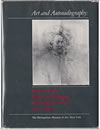
This book reports the most significant results of a scientific study of thirty-nine paintings in The Metropolitan Museum of Art. The works under investigation are by seventeenth-century Dutch and Flemish artists, mainly Rembrandt and his school.
Art and Autoradiography publishes for the first time data obtained by the use of a new technique, neutron activation autoradiography. Through this method, it is now possible to study the substructure of paintings, their genesis, and their condition in far greater detail than had been possible with the conventional techniques or X-ray radiography and infrared photography. As a result, an artist's creative process can now be studied very closely. Autoradiography provides significant information for resolving questions about an artist's oeuvre and about workshop variations, attribution, dating and even doubted authenticity. For example, Rembrandt's preliminary sketching on the canvas, the authenticity of some of his paintings, and previous restorations of others have now been established or clarified; a self-portrait of Van Dyck was discovered under his own painting.
In addition, the material presented here represents an interdisciplinary approach. The collaboration of two art historians (Maryan Wynn Ainsworth and Egbert Haverkamp-Begemann), a paintings conservator (John Brealey), a physical scientist (Pieter Meyers), and their colleagues has resulted in a full and rich interpretation of the autoradiographs.
Vermeer of Delft, one of the sublime Dutch artists of the seventeenth century, was locally respected but his reputation did not spread beyond his native Delft. In 1866, some two hundred years after Vermeer's death, at the age of only 42, the French writer Théophile Thoré published two series of articles which belatedly brought the artist to the world's attention, and rescued him from obscurity. In this illuminating study, Christopher Wright proposes a deeper interpretation of his early life and work finding that, before producing his now renowned paintings, Vermeer copied, and even altered, the Dutch and Italian Masters to suit local tastes. This book is a major contribution to the understanding and appreciation of Vermeer as it illustrates, often with details, all his known work. Particular emphasis is given to the major masterpieces such as his View of Delft and the Head of a Girl with a Pearl Earring, which has become one of the old master icons of modern times.
This surely ranks as one of the most profound interpretations of a painter ever written. Gowing reveals to us the mysterious relationship between Vermeer's psychological nature and the creation of his masterpieces. It can be read and re-read many times over.



